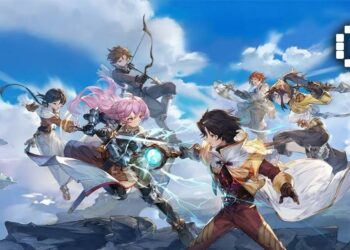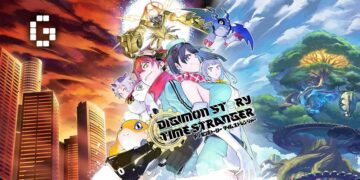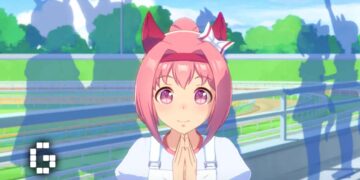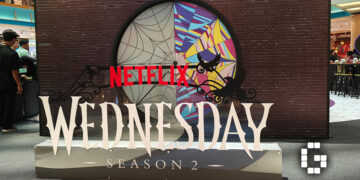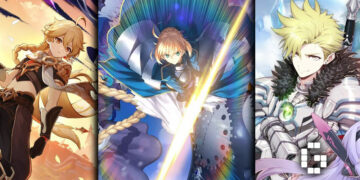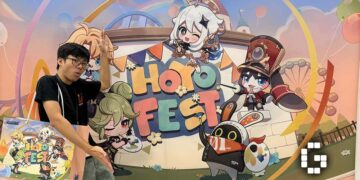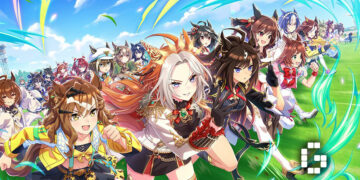We had the opportunity to interview key figures behind the highly anticipated RPG Metaphor: ReFantazio. Katsura Hashino, the game’s director, and Koji Ise, the lead graphic interface designer, shared fascinating insights into the development process, gameplay mechanics, and the unique vision driving this new fantasy title from Atlus. Their responses paint a picture of a game that aims to push the boundaries of the RPG genre while staying true to Atlus’ reputation for deep, engaging experiences.
Blending Fantasy and Modern Elements
Metaphor: ReFantazio marks a departure from Atlus’ usual modern settings, diving into a high fantasy world. However, Hashino revealed that they didn’t adhere strictly to medieval conventions. Instead, they focused on creating a world that best serves the game’s story. This approach allowed them to blend medieval and modern elements freely, resulting in a unique and visually striking universe.
Hashino elaborated on this design philosophy: “When considering what a medieval world needs, what the components of that setting are, we reach the conclusion that we actually didn’t need to be so strict about this and that. The more important thing was about telling the story of Metaphor: ReFantazio.”

This flexible approach led to interesting discussions during development. As Hashino explained, “There were a lot of discussions about things like, should things be rivets or screws in walls, or how much glass should there be in the town, considering if it’s medieval times, glass would have been a precious commodity.” Ultimately, they embraced the freedom that the fantasy genre allows, creating a world that serves the narrative and gameplay rather than strict historical accuracy.
Hashino further emphasized the importance of fantasy in their creative process: “One of the reasons we create this kind of fantasy world and stories is to confirm that the reality we live in does not have to always be the same. The reason we don’t create fantasy is because reality will never change. We create it because it will change.”
The Archetype System in Metaphor: ReFantazio
At the core of Metaphor’s gameplay is the Archetype system, a fresh take on traditional RPG job systems. Hashino explained that Archetypes are deeply integrated into the story, representing the kind of hero a character aspires to be. This system is tied to the game’s central theme of anxiety, with Archetypes symbolizing the transformation of personal anxieties into strength.

“The Archetype system, in essence, it’s a job system,” Hashino said. “But what we thought is that jobs are often not fully linked to the story. For example, there’s a character where their job might be a craftsman, but they’re not living the life of a craftsman in the game itself. So instead, we thought we could create the Archetype system and it had a different angle. So when the character gains that power of the Archetype, it’s more about what kind of hero they want to be.”
Hashino delved deeper into the concept behind Archetypes: “The big theme of this game is anxiety, and so there might be cultural boundaries which might change from country to country, but what we were thinking about was ‘Okay, where is anxiety felt the most?’ And we thought of the heart. And so that’s the source’s idea of grabbing your heart, pulling it out, and telling your heart to ‘ganbare’, work hard, try your best.”
Time Management and Player Choice
Metaphor incorporates a strong emphasis on time management. Players will need to make strategic decisions about how they spend their time, balancing quests, character interactions, and preparation. This system adds depth to the gameplay and influences the game’s difficulty, rewarding clever planning while remaining accessible through adjustable difficulty settings.

Hashino emphasized the importance of this system: “It has a big influence on the difficulty of the game. If you don’t prepare and go to a dungeon blind it would be really difficult, but if it goes well then you’ll save yourself a lot of time. And in that respect, it’s kind of similar to the real world and how we use time.”
He further elaborated on the concept of time in the game: “So what sets this title apart from most other fantasy RPGs is this idea of time, like in reality, us modern people, our time is limited all the time. For example, this interview itself, there are all these restrictions, it begins at this time, it ends at this time. Rather than having a game experience that would just continue on endlessly, we wanted to include this concept of time in the journey of the game.”
Visual Design and User Interface
Koji Ise shed light on the game’s distinctive visual style, particularly its user interface. The team went through multiple iterations, eventually settling on a design that complements the medieval fantasy setting while incorporating modern graphical techniques. This attention to UI design stems from the recognition that players spend significant time interacting with menus in RPGs, making an engaging interface crucial to the overall experience.
Ise explained their approach: “This is a fantasy title which is a brand new approach and it was important to incorporate the menu into that and have the stylish look that it has. In terms of not making it too overbearing, there was a lot of work to make sure that it fits into the game well, and we did a lot of play tests too.”

Hashino added, “The difference between an action game and an RPG game is that in an RPG game you spend a lot of time on menus looking at the UI, and if the UI is boring, then it’s not going to be a fun experience. So we wanted to make a fun gaming experience, and for that reason we put a lot of energy into making the UI interesting.”
He further detailed the challenges they faced: “During the development process, a lot of things move around in the interface. And if that’s not done well and there’s too much motion, then players can not know where to look. It can be overbearing, so there was a lot of work made on with the programmers and the whole team to have such a stylish grand interface, but also allowing players to be able to follow it and know where to look.”
Themes and Storytelling
Metaphor: ReFantazio explores themes of idealism versus reality, with a central plot revolving around a competition for the throne. Hashino expressed that this narrative framework allows them to examine the qualities and virtues required of a leader who takes on the anxieties and worries of their people. “When you have someone in a position of power like a king, you want that person to fix your anxieties or your worries, right?” Hashino explained.
“So during the story the protagonist tries to go for the throne and what we thought was really interesting was when someone goes on that side of taking on people’s anxieties in that way, what sort of virtues do they need to have? What sort of requirements are there to be in that position?” he added.
The game also delves into social dynamics, featuring eight distinct tribes that reflect various personality types and generational conflicts found in modern society. Hashino elaborated: “In terms of personalities that a lot of people have there’s a lot of labels, like someone could be considered very old-fashioned and stuck in their ways. And these kind of elements, these personalities that modern people now still have, we wanted to use them as motifs when designing the tribes.”

He further compared the game’s setting to their previous works: “If you compare it with the modern setting of the Persona series, it’s fairly limited or fixed in terms of location and time. It’s modern day high schoolers and the problems they face are problems that you can expect to face in the real world, so it’s sort of limited in that sense. And because of that, this time we created a whole new world and had a lot of freedom to explore various things.”
Looking Ahead with Metaphor: ReFantazio
Both Hashino and Ise expressed their excitement for players to experience Metaphor: ReFantazio. Hashino hopes that upon completing the game, players will feel they’ve gained some inner strength, even if it’s something small. “My goal was for people who’ve played the game, or after they’ve finished the game, to have a sort of after taste, like the feeling of they’ve gained some kind of strength, even if it’s something small,” he shared.
Ise, meanwhile, aspired to create “the coolest fantasy game” through their work on the project. He left a message for fans: “The process of creating the menus and such, we really wanted to get across what we’re trying to express with the game and we really hope you can enjoy all aspects of that and certainly play the game through to the end to enjoy it all. Please enjoy!”
Hashino also shared his thoughts on the game’s journey aspect: “The thing that really sets it apart is the fact that you’re going to go on a journey. The thing about journeys is that they have a beginning and an end. Whether it’s a three-day journey, one week or one month, there’s that time period and that was what we thought was the good aspect of journeys and that’s what we wanted to add to the game.”

As Atlus continues to push boundaries in the RPG genre, Metaphor: ReFantazio promises to deliver a unique blend of familiar elements and innovative ideas, all wrapped in a visually stunning package that fans and newcomers alike can look forward to exploring.








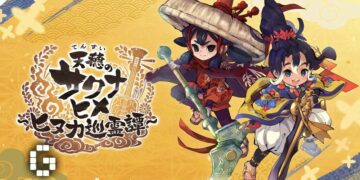
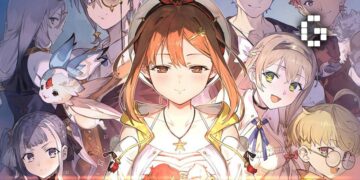
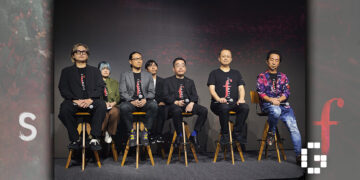

![[EXCLUSIVE] Creative Masterminds from Gearbox Software Reveal What Makes Borderlands 4 Worth the Wait](https://cdn.gamerbraves.com/2025/07/Borderlands-4-at-Bilibili-World-2025_Interview_FI-360x180.jpg)


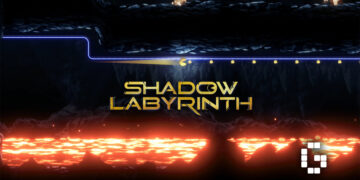

![[ASIA EXCLUSIVE] Bringing Back a Classic: Inside the Making of FINAL FANTASY TACTICS – The Ivalice Chronicles](https://cdn.gamerbraves.com/2025/06/FFT-Ivalice-Chronicles_Interview_FI2-360x180.jpg)
![[TGS24] Katsura Hashino & Koji Ise Share Insights on Crafting a New Fantasy World with Metaphor: ReFantazio](https://cdn.gamerbraves.com/2024/10/Metaphor-ReFantazio_Interview_FI-750x392.jpg)


